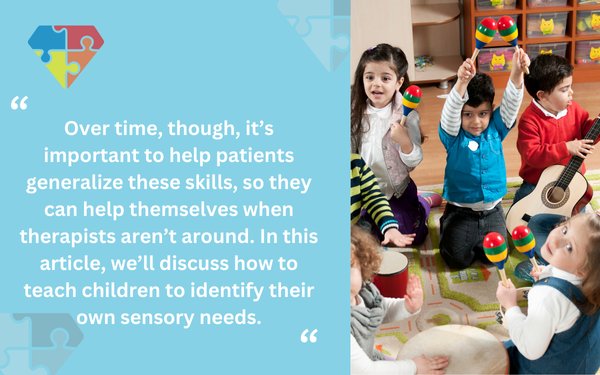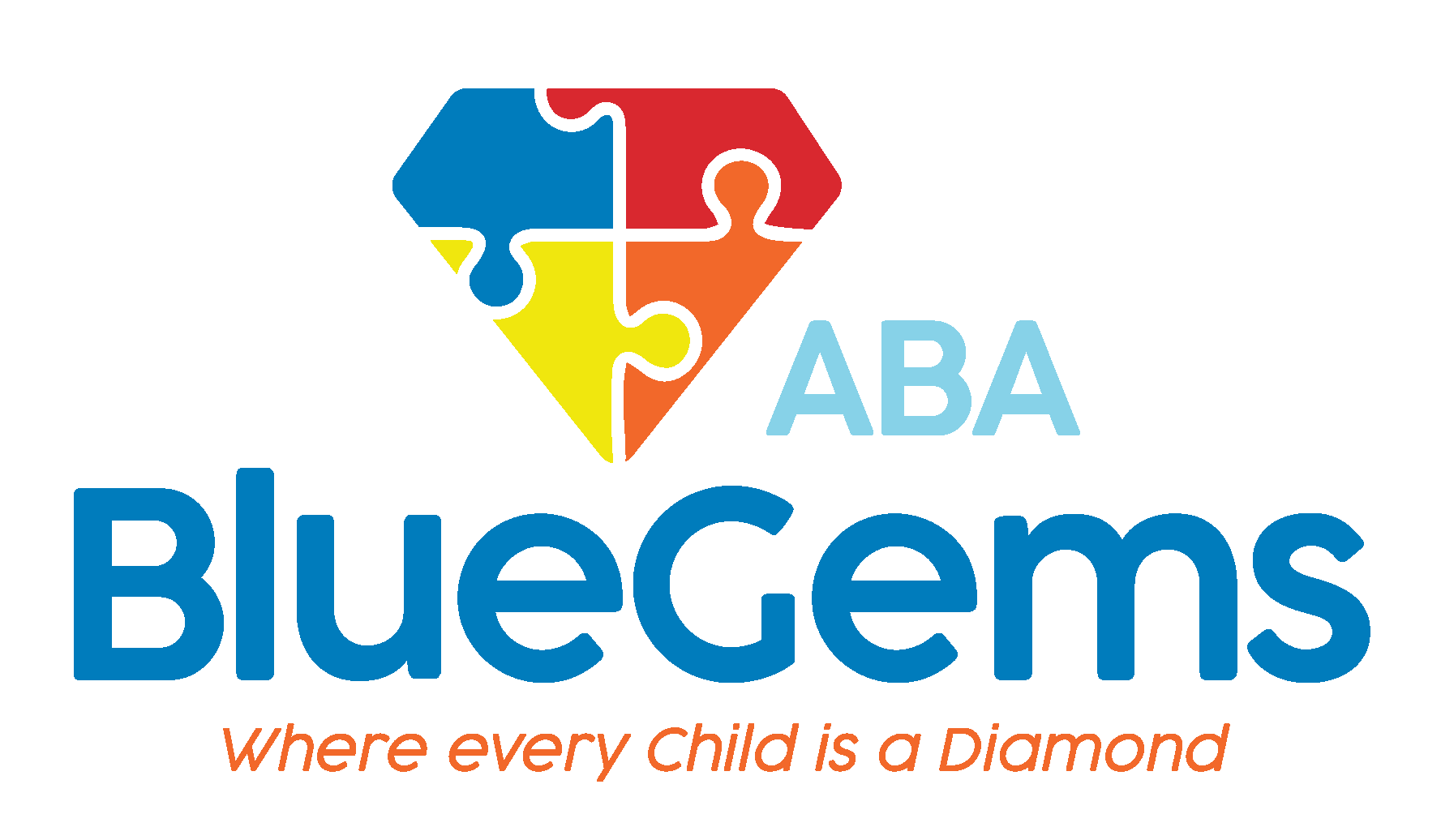Teaching Children to Identify Their Own Sensory Needs
All individuals process senses differently and have different sensory needs as a result. Those who have autism spectrum disorder (ASD) typically face more pronounced needs in this regard, due to either their hypersensitivity or hyposensitivity to certain stimuli.
As children with autism navigate their world, they may become easily overwhelmed or anxious in some situations due to their sensory sensitivities. For example, they may want to avoid loud noises, strong odors, bright lights and certain textures — or, they may seek out those sensory inputs.
One of the main goals of applied behavior analysis, or ABA therapy, is to help support children on the autism spectrum with their sensory needs. Therapists will identify each patient’s sensory needs, and then provide them with tools, strategies and coping mechanisms to meet those needs.
Over time, though, it’s important to help patients generalize these skills, so they can help themselves when therapists aren’t around. In this article, we’ll discuss how to teach children to identify their own sensory needs.
Table Of Contents
Teach the Senses
Understanding sensory needs starts with understanding the senses themselves.
Many people are familiar with the five senses — touch, taste, hearing, sight and smell — but there actually three others that are important, too. These are vestibular, which deals with movement and balance; interoception, which deals with sensations within the body; and proprioception, overall awareness of one’s body.
ABA therapists can teach what each of these senses are and how they work in similar ways they teach new skills and behaviors.

Connect Senses to Feelings
Once the basic knowledge of the senses has been taught, it’s next important to connect individual senses to feelings and emotions. Children will be exposed to different sensory stimuli, and then walked through how to identify how they make them feel.
In this way, children will learn not only how the senses work in general, but also how they react to specific sensory inputs. This information will be the foundation to meeting sensory needs.
ABA therapists can observe how the child reacts to the different stimuli so they can record their own findings. They’ll also have conversations with the children — and the children’s families — about their experiences and how they feel.
From this data, the ABA therapist can create a sensory profile for each child, which will essentially be an outline for what the needs are.
The next step is to develop strategies for self-regulation. This could involve helpful tools such as fidget toys or noise-cancelling headphones, for example, or could also include setting up a sensory-friendly environment in the home where the child can escape to if they’re feeling overwhelmed.
A lot of this will be trial-and-error, of course, though the ABA therapist will be trained in knowing some effective ways at meeting sensory needs based on scientific evidence. In time, therapists will follow these strategies and use these tools to help children cope with their emotions and meet sensory needs.
| Sensory Type | Description | Possible Reactions (Hyper/Hypo) | Support Strategies |
|---|---|---|---|
| Touch | Physical contact and textures | Avoids certain fabrics OR craves deep pressure | Weighted blankets, fidget toys |
| Sound | Hearing/loudness | Covers ears OR seeks noise | Noise-cancelling headphones, quiet zones |
| Vestibular | Balance and movement | Gets dizzy easily OR seeks spinning/jumping | Swings, balance boards |
| Interoception | Internal body sensations | Struggles to identify hunger/pain | Visual supports, guided awareness |
| Proprioception | Body awareness | Clumsy OR constantly moving | Heavy work, body breaks |
Develop Strategies for Self-Regulation
The ultimate aim of all ABA therapy goals is for the patient to achieve generalization. This means that they have mastered the skill or behavior to the point where they can exhibit it across different environments, in different situations and on their own.
There are many ways that this can be done, and the best path forward for this will depend on the individual child. That being said, there are some common ways in which ABA therapy can help children identify and meet their own sensory needs.
One is to establish a place where sensory items can be found if needed. This toolbox, so to speak, can include things such as fidget toys, scents that they like or weighted blankets.
Children will know where these items are located at all times, and can then help themselves to them when they feel the need. As they are developing the skills to be able to do this on their own, therapists can help them advocate for themselves by asking adults for help when they need it, or even just communicating that they are feeling overwhelmed so the adult can get them the support they need.
In addition, ABA therapists can teach children coping mechanisms in case this toolbox isn’t available. This might include practicing deep-breathing techniques or escaping to a place that’s quiet if they can.
Blue Gems ABA Helps Children with ASD Live Independently
All children have sensory needs in some form or another, but children on the autism spectrum typically have more pronounced needs in this regard. That’s why helping children to identify their own sensory needs — and then teaching them how to support themselves over time — is so important.
At Blue Gems ABA, our team of experienced therapists follows the principles of ABA therapy to help children with autism build the social, communication and daily life skills with which they typically struggle. In doing so, we help them live as independently as possible.
To learn more, please contact us today.




